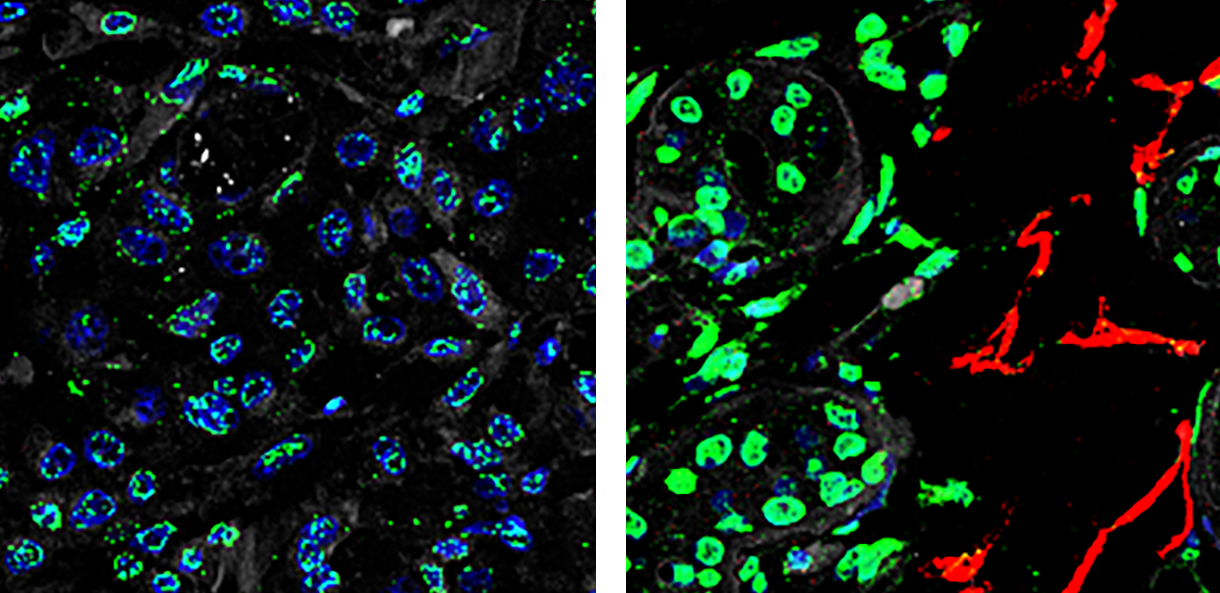

When expressed by cancer cells in specific phenotypic states, signaling through the AXL receptor—a tyrosine kinase—plays a role in cancer invasion and drug resistance in multiple cancers. Researchers co-led by Ludwig Oxford’s Colin Goding, Ana Chocarro-Calvo and a colleague in Spain reported in a February paper in Genes & Development that, in a melanoma model, the AXL receptor is activated by exposure to human adipocytes and to oleic acid, a fatty acid abundant in both lymph and in adipocytes. AXL activation triggers the nuclear translocation of a β-catenin–CAV1 complex that is required for melanoma invasiveness. The researchers show that only undifferentiated melanoma cells expressing AXL at high levels engage in symbiosis with human adipocytes, in part by inducing lipolysis. This in turn leads to their uptake of fatty acids and the nuclear translocation of the β-catenin–CAV1 complex. They also showed that CAV1 is abundant in the nucleus of human melanoma cells near adipocytes. These findings underscore the importance of microenvironmental forces in cancer progression, illustrating how metastasis can be triggered by a specific nutritional stimulus delivered to cells in a receptive phenotypic state. Their findings, the researchers note, have implications for a broad range of other cancers that also express AXL and offer insights into the mechanisms underlying cancer cell dormancy and resistance to therapy.
Fatty acid uptake activates an AXL–CAV1–β-catenin axis to drive melanoma progression
Genes & Development, 2025 February 27
